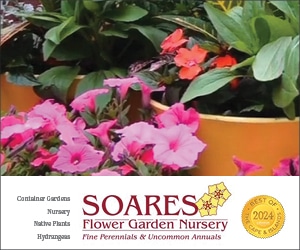
Bunny Business
Cape Cod Life / June 2013 / Nature, People & Businesses
Writer: Matthew J. Gill
Bunny Business

Cape Cod Life / June 2013 / Nature, People & Businesses
Writer: Matthew J. Gill
Thanks to the Trustees of Reservations, a rabbit species in distress finds a hospitable home on the Mashpee River Reservation.

For a better understanding of what the Trustees of Reservations’s latest project is all about, imagine for a moment, that you’re less than a foot tall. And furry.
Your daily goals are simple ones: set out for food, bring home a few bites for your family, and most importantly, survive the outing. You’re quick for sure, but even though your four rabbit’s feet must bring in a fair share of luck, hawks, owls, and other predators are numerous and hungry, and you just happen to be their favorite dish. To make matters worse, the dense bushes and thorny vines—the cover that enables you to return home unscathed—have thinned out in recent years, and as a result, your numbers—gulp—have dwindled.
That’s why the Trustees of Reservations, the state’s largest conservation organization, has launched its latest project at the Mashpee River Reservation. The goal is to restore the habitat and, consequently, grow the population of the New England cottontail, the only rabbit native to the region—and a species that is facing potential extinction.
According to the Trustees, the range of the New England cottontail—the total geographical area within which the animal can be found—has decreased by 86 percent in the last half-century, largely as a result of a loss of its habitat. Where the animal once resided across a large swath of land from eastern New York to Vermont and Southern Maine, and throughout Massachusetts, Connecticut, and Rhode Island, the species can now only be found in five pockets, or “subpopulations,” within this larger area. Other factors that have contributed to the rabbits’ decline include increased development in the region and the proliferation of a new predator: the coyote. “The rabbit is really getting hammered from a number of different sides,” says Russell Hopping, Ecology Program Director at the Trustees of Reservations.

As a result, the cottontail was named a candidate for protection under the federal Endangered Species Act in 2006, a candidacy the Trustees hope does not come to fruition. And it’s not just for the animals’ sake: If the rabbits are designated as endangered, official measures to protect the animal would result in greater restrictions for landowners residing in cottontail habitats. “The goal is not to list the animal,” Hopping says. “The goal is to restore the species.”
Work on the Trustees’s project site, a 50-acre parcel inside the Mashpee River Reservation, bordering Quinaquisset Avenue, got underway in February and finished in May. Workers harvested and removed up to 80 percent of the black and white oaks and white pines that make up the tree canopy in designated areas of the site. This clearing of trees, says Hopping, allows sunlight to reach the ground, inspiring the growth of low bushes, shrubs, and small plants that serve as the rabbits’ home. “The species really requires large areas of very dense shrubs,” Hopping says. “[The rabbit] wants to stay concealed under cover at all times.”
Hopping says dense undergrowth—a thicket—provides shelter for the cottontail as it travels back and forth in search of food. As trees in the area grow taller and the canopy closes in, smaller plants below fare poorly, diminishing the habitat for rabbits and other small woodland animals. When a large area of habitat fragments into smaller patches, Hopping says the rabbit must venture out from protection to find food, naturally putting itself in the path of predators like hawks, owls, fishers, and, in developed areas, cats and dogs. The trouble for the animal is simple, Hopping says: “Everybody likes rabbit.”
In addition to the New England cottontail, the habitat restoration project also benefits other species that make the ground cover their home, including the Black Racer and hognose snakes, the box turtle, the ruffed grouse, and the whip-poor-will bird.
The Trustees received funding for the project from the Natural Resources Conservation Service and the U.S. Fish and Wildlife Service. The project in Mashpee is part of The New England Cottontail Initiative, a larger effort which involves agencies sharing the goal of reviving the cottontail populations from Maine to east of the Hudson River in New York. In designated regions, the U.S. Fish and Wildlife Service works with private landowners such as the Trustees concerning eligibility for funding to allow habitat restoration work to be conducted on their properties. Ted Kendziora, a biologist for the U.S. Fish and Wildlife Service, says the goal is to establish corridors for the cottontail to travel from one habitat to another. “We have projects going throughout the range,” says Kendziora. “It’s all inter-linked.”

When Mashpee was identified as a focus area, the U.S. Fish and Wildlife Service, the Trustees, and other groups worked together to apply for a grant from the Natural Resources Conservation Service. “It took well over a year and a half to get this project funded and planned,” Kendziora says. “It’s a lot of work, but it’s a lot of great work.”
The Mashpee River Reservation, Hopping says, was deemed a good spot for the project because it was near other rabbit populations. And at 50 acres, the area is large enough to serve as a viable New England cottontail habitat. It’s also situated in a rural area with few homes nearby and the property is not fragmented into smaller parcels. To maintain the habitat in the future, additional work will likely include a controlled burn in coming years.
Nancy Durfee, the Trustees’s Southeast Engagement Manager, says she views the project as an opportunity to reach out to the community to let them know the cottontail is in danger and what can be done to help. “I think one of the most important things about this project is its visibility,” she says. “We’re really the last frontier for this species. We don’t want to see them extirpated. I’d hate to see us lose a species when we had an opportunity to preserve it.”
Kendziora says the question he hears most from neighbors to a project, or passersby, is the following: Why are you cutting down the trees? “One of the most important things is to teach people that cutting trees does create habitat,” Kendziora says. “There’s a misconception that, when you cut a tree, someone’s going to come in the next day and pave it. What I’m trying to do is to teach people that cutting trees, for habitat, and doing it the right way with a professional, is a good thing. It’s not cutting for development.”
At least, not in a traditional sense. In this case, the development the Trustees are hoping for involves smaller-scale homes intended for smaller residents, featuring a natural look—and a little protective cover.
For more information about the Trustees of Reservations, visit thetrustees.org.



